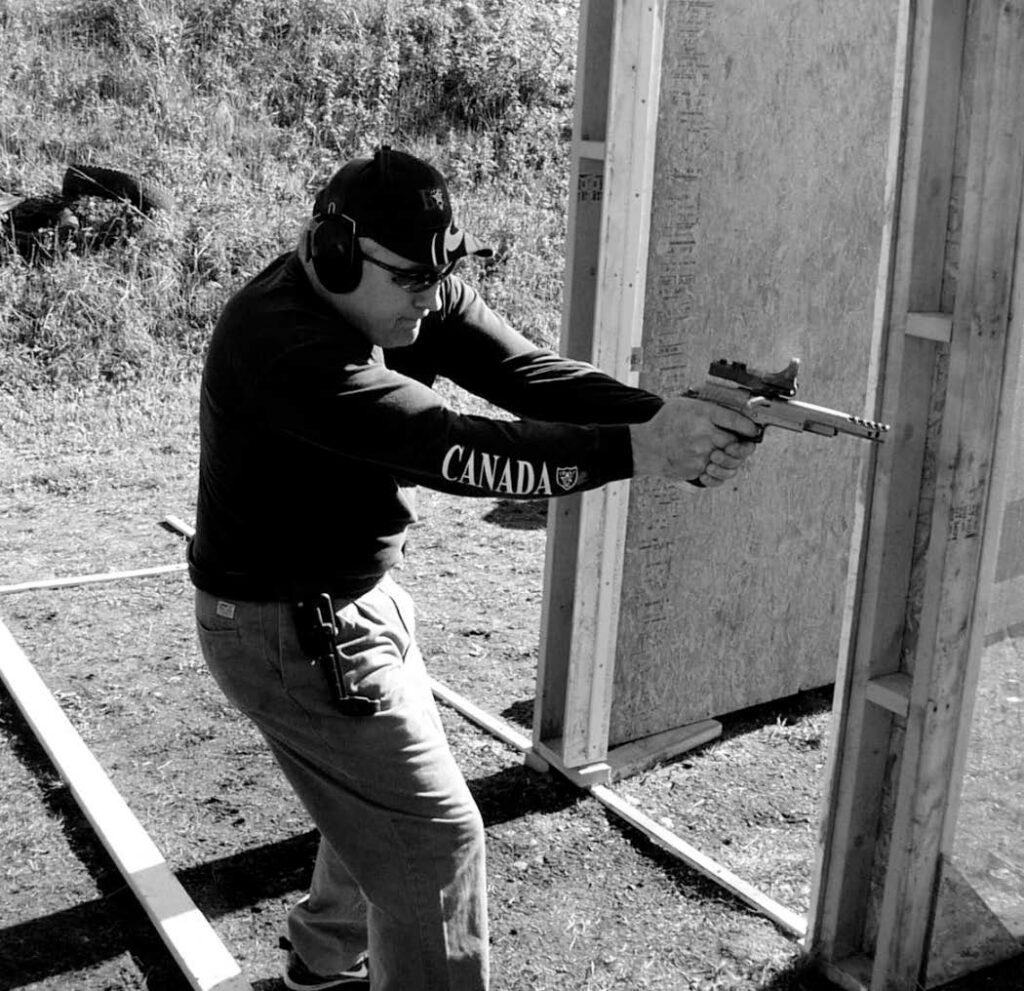Firearms, Magazines/Speedloaders and Ammunition
Firearms
The dominant firearm that was used in IPSC, when it was first started, was the Colt 1911 in .45 ACP or its equivalent. Over the years, as firearm technology and calibers improved, the choice for the competitor has increased. Now there are many different manufacturers of firearms used in IPSC. The 1911 style of firearm still makes up a large segment of the equipment that competitors use. Some of the manufacturers that produce the 1911 style of firearm are:
- Colt
- Kimber
- Les Baer
- Para-Ordnance
- Springfield Armory
- SPS
- STI
- SVI
- Valtro

One of the fastest growing divisions in IPSC is production. Some of the manufacturers that produce firearms that are approved for this division are:
- Beretta
- CZ
- Glock
- Sig Sauer
- Smith & Wesson
- Heckler & Koch
- EAA
- Para-Ordnance
- Walther

It is common practice for most competitors to modify their firearms to suit their personal needs. Make sure that you check the rulebook to determine what modifications are allowed in each division. Some examples of common modifications you will find in standard division are:
- High visibility sights
- Lowered ejection port
- Extend or ambidextrous safety
- Extended magazine release
- Modify grips
- Larger magazine wells
For a competitor to be successful in IPSC competition you need to have a firearm that is extremely reliable. It is strongly recommended to have a qualified gunsmith do any or all modifications to a firearm that involve the internal workings.
Magazines/Speedloaders
A competitor will need a minimum of five magazines, or six speedloaders, (more is better), to participate in IPSC. Magazines and speedloaders are the heart of a firearm, and without good quality, properly cared for magazines or speedloaders the firearm will malfunction, sooner or later. When buying spare magazines or speedloaders, purchase the best ones that are available. Aftermarket magazines usually come with better features such as extra round capacity, larger base pads, quick releases, etc.


Check the rulebook to determine what “extra features” are allowed for each division.
Ammunition
The majority of IPSC competitors load their own ammunition. The primary reason for this is that the cost savings are significant and the ammunition can be tuned to the firearm. This will allow the firearm to perform at its maximum potential. Extreme care must be taken in the reloading of ammunition. It is not necessary to load ammunition beyond safe levels. All that is required is to achieve the necessary power factor.
When loading for competition it is absolutely essential to use the best components. Reliability is the key factor, for even the most expensive firearm will not function properly if it is fed sub-standard ammunition.
If you decide to load your own ammunition, it is strongly recommended that you purchase or get access to a chronograph. A chronograph is used to measure the speed that a bullet is traveling. This will allow you to calculate your power factor. At many competitions it is mandatory that all competitor’s ammunition is chronographed to determine if they are shooting major or minor.

When traveling around to different competitions you must consider the changes in atmosphere, humidity and temperature. Different chronographs can cause differences in power factors. That is why it is recommended that the load should be slightly higher than the required power factor. It is not necessary to have a load far exceed the minimum power factor required for a division.
Some of the most popular calibers that you will find used in IPSC competitions are:

